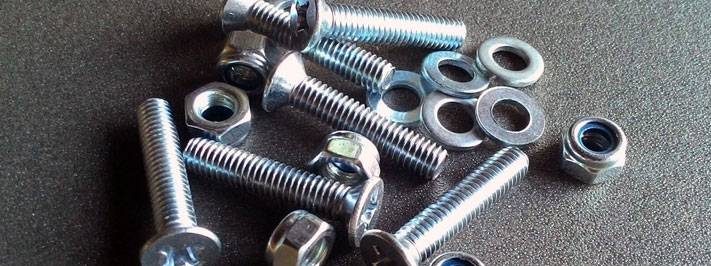Hastelloy C276 Hex bolts, known for their exceptional resistance to corrosion, high temperatures, and mechanical stress, are crucial components in many industries, including chemical processing, oil and gas, and aerospace. Among the various grades of Hastelloy, Hastelloy hex bolts and Hastelloy C22 Hex Bolts are particularly popular due to their superior performance. Understanding the manufacturing process of these bolts can shed light on why they are so reliable and durable.
Raw Material Selection
The first step in the manufacturing of Hastelloy C276 Hex Bolts and Hastelloy C22 Hex Bolts is the selection of raw materials. Hastelloy alloys are primarily composed of nickel, molybdenum, and chromium, with specific proportions varying depending on the grade.
- Hastelloy C276: Contains about 57% nickel, 16% molybdenum, and 16% chromium, with additional elements like tungsten, iron, and carbon.
- Hastelloy C22: Comprises approximately 56% nickel, 22% chromium, and 13% molybdenum, along with other elements such as iron, cobalt, and tungsten.
These raw materials are sourced in high-purity forms to ensure the quality of the final product.
Melting and Alloying
Once the raw materials are procured, they are melted together in a high-temperature furnace. This process, known as alloying, ensures that the elements are thoroughly mixed to form a uniform Hastelloy alloy. For Hastelloy C276 Hex Bolts and Hastelloy C22 Hex Bolts, precise control of the melting process is crucial to achieve the desired chemical composition and properties.
Casting and Forming
After the alloying process, the molten Hastelloy is cast into ingots or billets. These solidified forms of the alloy are then subjected to hot and cold working processes to shape them into rods. The rods serve as the base material for manufacturing hex bolts.
- Hot Working: The billets are heated and passed through rolling mills to reduce their cross-sectional area and elongate them into rods. This process refines the grain structure and enhances the mechanical properties of the alloy.
- Cold Working: The rods are further processed at room temperature to improve their dimensional accuracy and surface finish. Cold working also increases the strength and hardness of the alloy through work hardening.
Cutting and Shaping
The rods are then cut into the desired lengths for bolt manufacturing. For Hastelloy C276 Hex Bolts and Hastelloy C22 Hex Bolts, precision cutting is essential to ensure consistent bolt sizes. The cut pieces are then subjected to a series of machining operations to form the hexagonal heads and threaded shafts.
- Heading: This process involves forming the hexagonal head of the bolt by applying pressure to the cut rod. The heading machine uses a die to shape the head while maintaining the integrity of the material.
- Threading: The shaft of the bolt is threaded using a rolling or cutting process. Rolling involves passing the bolt through dies that imprint the thread pattern, while cutting uses a lathe to remove material and form the threads. Rolling is often preferred for Hastelloy hex bolts as it enhances the material’s strength and fatigue resistance.
Heat Treatment
Heat treatment is a critical step in the manufacturing of Hastelloy C276 Hex Bolts and Hastelloy C22 Hex Bolts. This process involves heating the bolts to a specific temperature and then cooling them at a controlled rate to achieve the desired mechanical properties.
- Solution Annealing: The bolts are heated to a high temperature to dissolve any precipitates and homogenize the microstructure. This process improves the alloy’s corrosion resistance and ductility.
- Quenching: After solution annealing, the bolts are rapidly cooled to lock the microstructure in place. Quenching can be done using water, oil, or air, depending on the desired properties.
- Aging: For some applications, the bolts may undergo an aging process to enhance their strength and hardness. This involves reheating the bolts to a lower temperature and holding them there for a specified time before cooling.
Surface Treatment and Finishing
The final steps in the manufacturing process involve surface treatment and finishing to improve the appearance, corrosion resistance, and performance of the bolts.
- Pickling and Passivation: The bolts are cleaned using an acid solution to remove any surface contaminants and oxide layers. This process, known as pickling, is followed by passivation, which forms a protective oxide layer on the surface to enhance corrosion resistance.
- Coating: Depending on the application, the bolts may receive additional coatings such as PTFE, zinc, or phosphate to provide extra protection against corrosion and wear.
- Inspection and Testing: Quality control is critical in the manufacturing of Hastelloy C276 Hex Bolts and Hastelloy C22 Hex Bolts. The finished bolts undergo rigorous inspection and testing to ensure they meet the required specifications and standards. This includes dimensional checks, hardness testing, and corrosion resistance tests.
Packaging and Distribution
After passing all quality checks, the Hastelloy hex bolts are carefully packaged to prevent damage during transportation. They are then distributed to various industries, where they play a crucial role in maintaining the integrity and safety of chemical processing equipment, oil and gas infrastructure, aerospace components, and more.
Conclusion
The manufacturing process of Hastelloy C276 Hex Bolts and Hastelloy C22 Hex Bolts is a complex and meticulous procedure that ensures the production of high-quality, reliable fasteners. From raw material selection to final packaging, each step is designed to enhance the performance and durability of these bolts in demanding environments. Their exceptional corrosion resistance, strength, and high-temperature performance make them indispensable in industries where safety and reliability are paramount.


